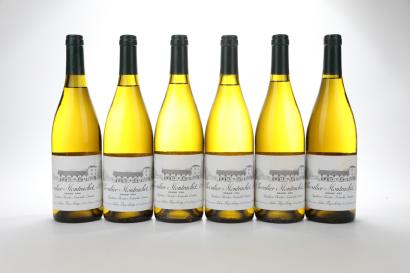
An almost mythical domaine created by the enigma that is ‘Lalou’ – madame Marcelle Bize-Leroy. Named after Lalou’s home in the Côtes de Beaune village of Saint-Romain, the Auvenay label was established in 1988, the same year as Lalou formed Domaine Leroy. Both were created via the acquisition of high quality vineyards, Domaine Leroy initially majoring on red wines, d’Auvenay on whites.
Colour was one differentiator, the other was ownership. Domaine Leroy was founded within the enterprise of Maison Leroy, the negociant company of the Leroy family, inherited by Lalou and her sister Pauline (Roch) following the passing of Henry Leroy in 1980. D’Auvenay is the personal project of Lalou, supported until his death in 2004 by her husband Marcel Bize, and destined to pass eventually to their daughter Perrine Fenale.
The Leroy extended family is, incidentally, co-owner of Domaine de la Romanée-Conti alongside the de Villaine family. Bize-Leroy was co-manager of the estate from 1974 to 1992 a baton held by her niece Fenale today.
With only four hectares of ultra-low-yielding vines, production at d’Auvenay is small, in difficult vintages almost microscopically so. Every aspect of winegrowing and winemaking is scrupulously controlled by its owner, as is the decision over which wines to release onto the market and when. Even now, in her nineties, Madame B-L repeatedly blind-tastes every vintage and label to judge when a wine is ready to be passed to its eager customers. Given their inevitable concentration when young, all of the wines and the grand crus in particular remain in the cellars in Saint-Romain for upwards of six years before first release, and occasionally up to seventeen years - the 2005 Grands Crus rouges were initially released in 2022. Second tranche releases often follow in later years. Prices in the market – as indeed release prices from the domaine – can be as surreal as the wines themselves.
Small plots of vines are owned in the following crus:
Grands Crus (white)
- Chevalier-Montrachet
- Criôts-Bâtard-Montrachet
- Bâtard-Montrachet
Grands Crus (red)
- Mazis-Chambertin
- Bonnes-Mares
Premiers Crus (white)
- Meursault Les Gouttes d’Or
- Puligny-Montrachet Les Folatières
Other Crus (white)
- Meursault Pré de Manche
- Meursault Chaumes des Perrières
- Meursault Les Narvaux
- Puligny-Montrachet Les Enseignères
- Puligny-Montrachet en La Richarde
- Auxey-Duresses Les Clous (also in red)
- Auxey-Duresses Les Boutonniers
- Auxey-Duresses La Macabrée
A speciality is an apparently humble Bourgogne, the Domaine’s Aligoté Sous Chatelet. Here Bize-Leroy has elevated this sometime workhorse grape into a wine of international interest.
Viticulture respects biodynamic teachings in terms of soil treatments, and vines are cared for on an almost individual basis. In the vineyard the domaine mostly eschews vine pruning during the growing season, instead opting to tie/braid the top shoots: the vine’s energy is thought to go to the tops of the vines rather than to the leaves and fruit, resulting in smaller and more intensely aromatic grapes. Crop thinning ensures ultra low yields and grapes are given the five-star treatment during harvest, cosseted and rigorously selected to ensure the highest quality. Whole bunch fermentation is the norm.
Undoubtedly the celebrity of the estate is built on the fabled quality of the wines, but significantly aided by the passion and drive of a remarkable woman. Decades of immersion in the wines of Burgundy (she entered the family business in the 1950s) together with a desire to lift quality to a level that was commensurate with her vision, have created a domaine – and wines – like no other.
As a note to buyers given the astronomical prices these wines can fetch, the bottling process is not always in line with the attention to detail shown elsewhere in the operation. The Domaine (and, likewise, Domaine Leroy) is known for sometimes imperfect bottling practice, often overfilling bottles prior to sealing with wax capsules, which can result in apparent seepage from the cork and in wax cracking or degradation. This is generally only an aesthetic issue but one which causes unease for buyers, with ambiguity as to the cause. Thankfully, the Domaine seems to have eradicated this issue from the 2014 vintage. Likewise, along with much of Burgundy, premature oxidization is a real risk for the Domaine’s whites once they acquire some bottle age, perhaps heightened by Lalou’s unequivocally organic approach.
Regardless, the best bottles – certainly for Auvenay’s whites – contain wine widely appreciated as the absolute pinnacle of Burgundy.
Enquire here about Provinance's availability of wines from this producer.
